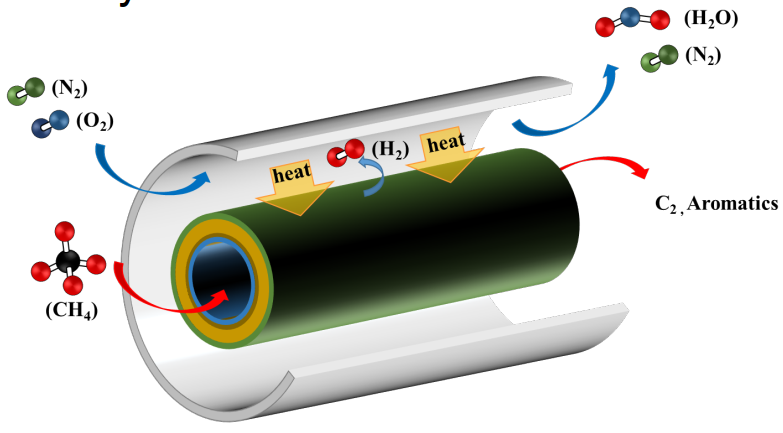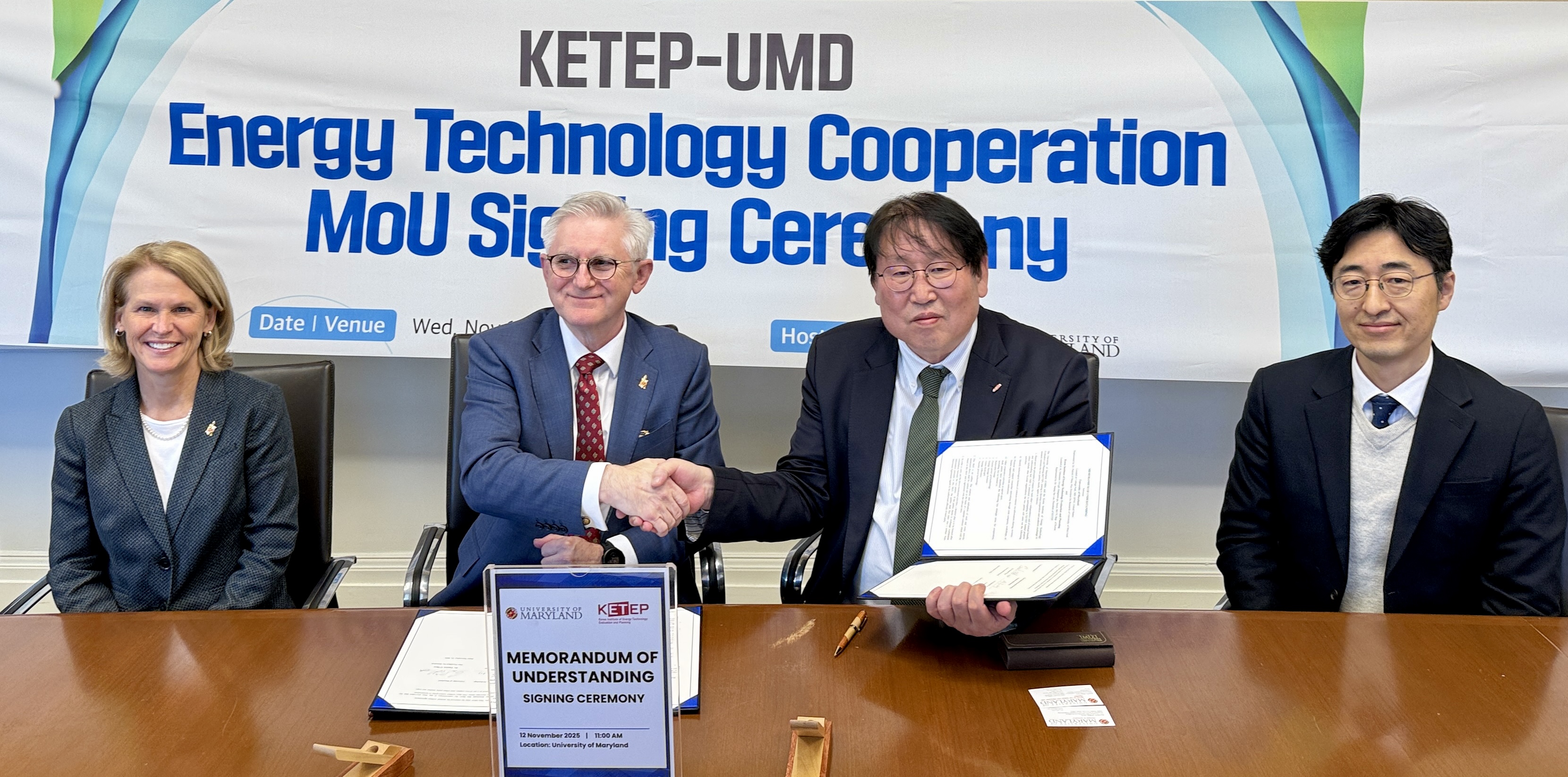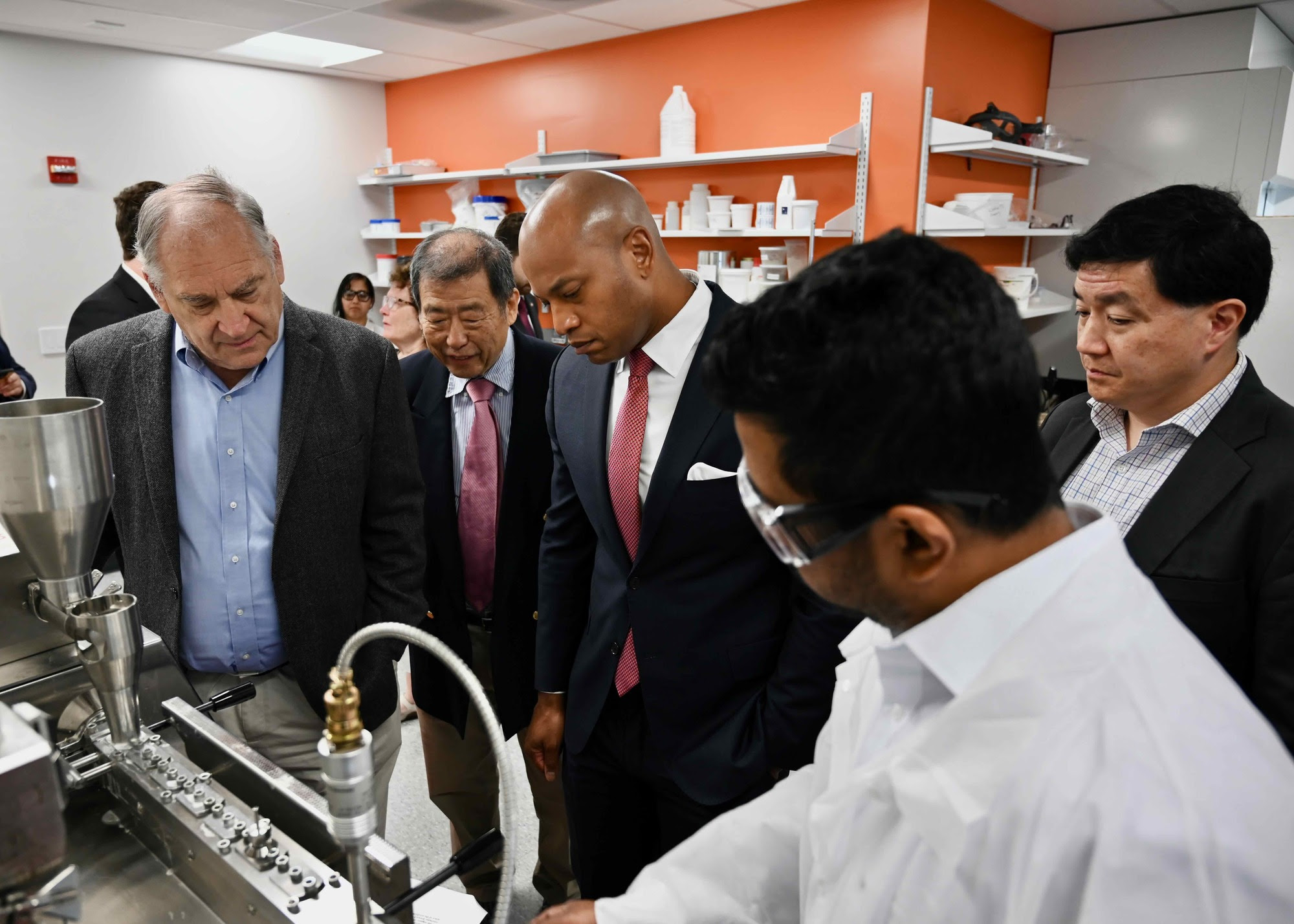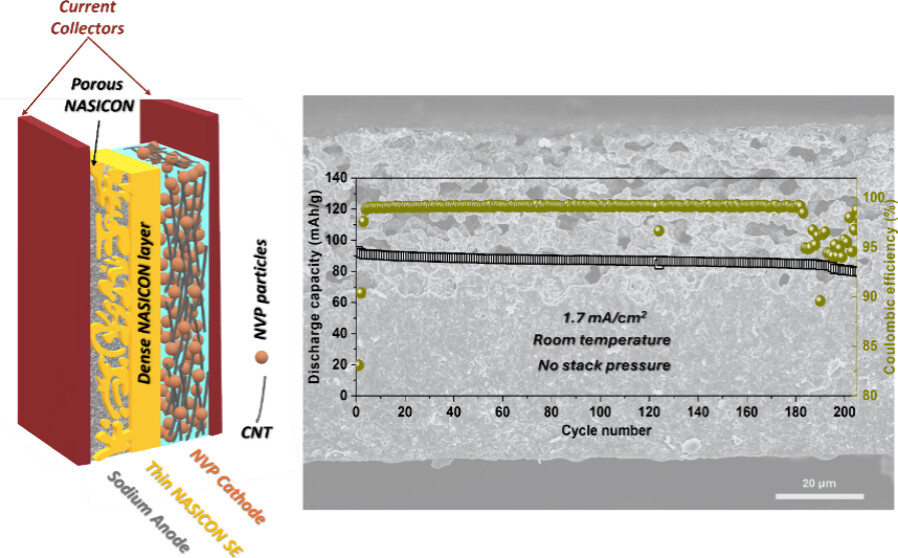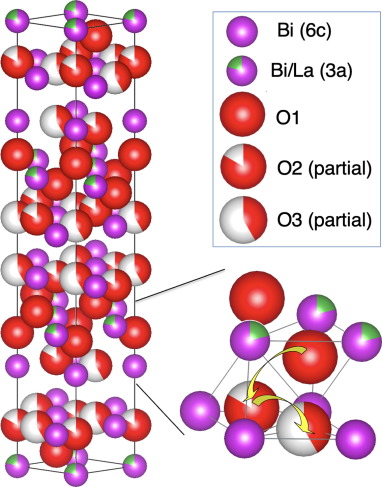News Story
Mtech Ventures company spotlight: Alchemity
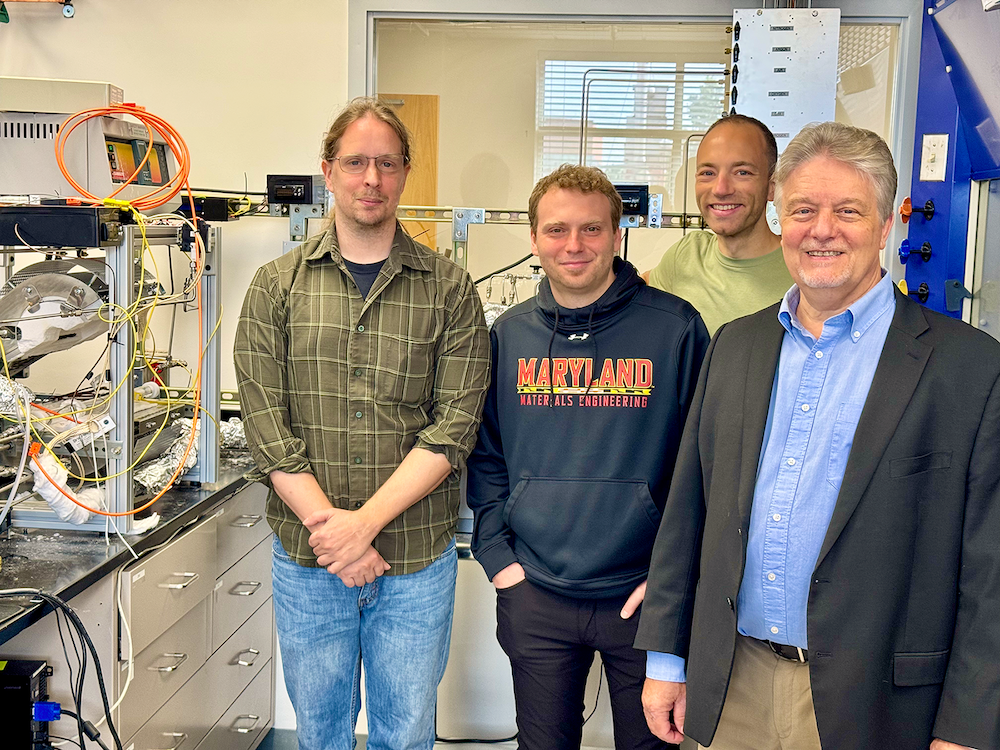
Pictured: Alchemity team members Christopher Dockman, Eugene Ostrovskiy, Franz Koberg, and Eric Wachsman, founder and executive chair, and director, Maryland Energy Innovation Institute.
Alchemity is a University of Maryland spinout company that transforms chemicals into value-added products via ion-conducting ceramics and develops solid oxide fuel cells for producing power.
Launched on a foundation of 37 licensed patents from UMD and the University of Florida, Alchemity gathers up 35 years of research from company Founder and Executive Chair Eric Wachsman, also director of the Maryland Energy Innovation Institute (MEI2) and a University of Maryland Distinguished University Professor.
“We have licensed everything Eric has invented in the membrane reactor and fuel cell spaces,” said Alchemity CEO Rodger McKain. “Eric has been careful to invent things with commercial prospects.”
McKain, a former vice president of research for BP North America who also led a fuel cell company that eventually became LG Fuel Cell Systems, left retirement to help Wachsman start Alchemity and put it on a clear path for growth.
That path, in line with the company’s intellectual property, involves developing two products in parallel: membrane reactors and solid oxide fuel cells. The company’s membrane reactors were developed to replace flares in oil fields. They capture methane and convert it to useful chemicals without releasing carbon dioxide into the atmosphere.
“Methane is found with oil,” said McKain. “What happens over time, as you draw more oil out of a well, more and more natural gas also comes through. It limits the ability to produce oil if you have nowhere to put the natural gas.”
Oil companies can “flare” or burn the methane, simultaneously sending some of it into the atmosphere. According to the World Bank Group, methane is over 80 times more powerful than carbon dioxide as a [global] warming gas over a 20-year timeframe.
“They have these flares all over the world, and because they are often remote, there is no financial incentive to do anything with the natural gas,” said Wachsman. “It is wasting a major resource, and it is polluting. Our [membrane] reactor will convert methane to benzene and other liquid fuels, and it does so with zero greenhouse gas emissions.”

Pictured: Wachsman with a small-scale version of Alchemity’s ion-transport membrane.
Alchemity’s membrane system can be adjusted to convert methane into a variety of major commodity chemicals, including ethylene, which can be converted to polyethylene to make plastics and naphthalene, used in mothballs, dyes and synthetic resins.
It can also be used to produce hydrogen. “Our best chance for the hydrogen economy is using this technology,” said Wachsman. “Right now, methane steam reforming is used to make hydrogen, but it also produces a lot of CO2. Our membrane reactor produces no carbon dioxide because all of the carbon goes into the commodity chemical and pure hydrogen is produced on the other side.”
Alchemity’s second product is its solid oxide fuel cell, an electrochemical conversion device that creates electricity by oxidizing a fuel without combustion. Solid oxide fuel cells are already used in a variety of applications, from stationary power generation to mobile and residential applications, with outputs from 100 watts to two megawatts.
“Eric has developed a solid oxide fuel cell that has much more power per square centimeter than any other,” said McKain. “That means you use less fuel cells to produce a certain amount of power. It is recognized as industry-best.”
What’s more, Alchemity’s fuel cells run at lower temperatures than any commercial cells.
“Most solid oxide fuel cells run at between 800—900 degrees centigrade, while ours operate at 600-650 centigrade,” said McKain. “Lower temperatures mean you can use lower-cost materials for the cells, plus you gain more operational flexibility. According to Wachsman, Alchemity’s fuel cells have up to 20 times the power density of commercial cells.

Pictured: one of Alchemity’s solid oxide fuel cells.
Alchemity is a subcontractor on a $5 million ARPA-E REEACH program grant to develop a hybrid solid oxide fuel cell/turbogenerator for aircraft. The grant, led by principal investigator Christopher Cadou, Keystone Professor in the department of aerospace engineering at the University of Maryland, also includes the Colorado School of Mines and Raytheon.
“The goal of the project is to extend the range of a plane and reduce fuel consumption,” said McKain.
Additional grant funding acquired by Alchemity includes: $135,000 Shell GameChanger award and a $200,000 Maryland Innovation Institute seed grant. Alchemity was also a Maryland Energy Innovation Accelerator (MEIA) Pitch Competition winner and currently plans to close a pre-seed round of funding within the next two months.
The company has five employees, with plans to hire ten more in the next six to 12 months.
Alchemity worked with the University of Maryland Office of Innovation to license its technology. “The support that comes through UMD is terrific,” said McKain. “It is much better than I have experienced before. Anyone who makes that first [licensing] hurdle at UMD, it bodes well for them being successful.”
Alchemity was launched in February 2024. The company entered the Mtech Ventures incubator in April 2024.
“Mtech Ventures staff members provide a support group for us to meet the right investors,” said McKain. “They also offer guidance for what needs to go into our investment pitch package. They have been extremely helpful. We are not novices, but we still appreciate it.”
For Wachsman, the incubator’s proximity to his laboratory on campus is also important. “Being close enables me to be directly involved and see what’s going on,” he explained. “It also allows us to make cells in my lab and test them in the incubator.
Published October 15, 2024

